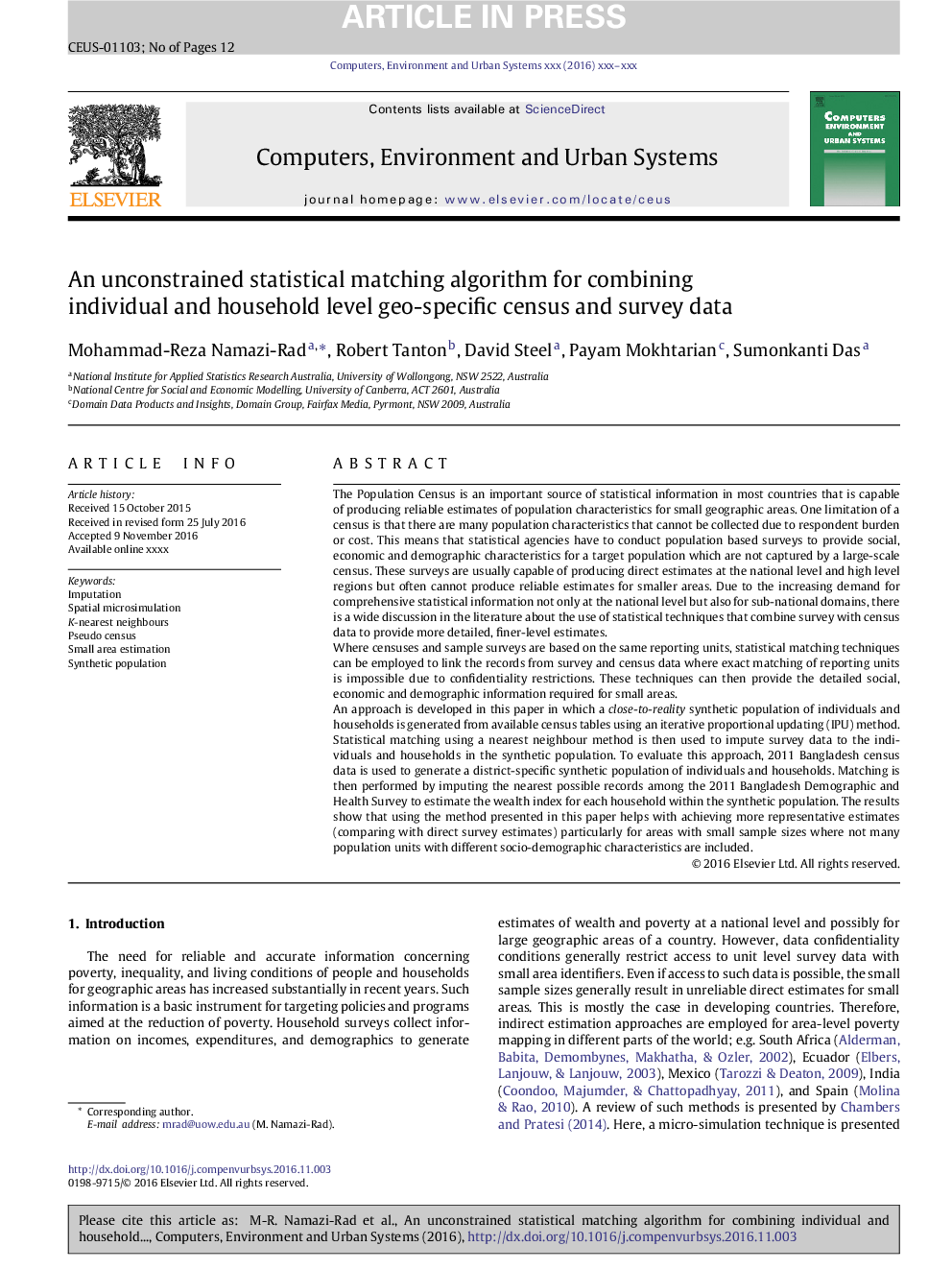| Article ID | Journal | Published Year | Pages | File Type |
|---|---|---|---|---|
| 4965168 | Computers, Environment and Urban Systems | 2017 | 12 Pages |
Abstract
An approach is developed in this paper in which a close-to-reality synthetic population of individuals and households is generated from available census tables using an iterative proportional updating (IPU) method. Statistical matching using a nearest neighbour method is then used to impute survey data to the individuals and households in the synthetic population. To evaluate this approach, 2011 Bangladesh census data is used to generate a district-specific synthetic population of individuals and households. Matching is then performed by imputing the nearest possible records among the 2011 Bangladesh Demographic and Health Survey to estimate the wealth index for each household within the synthetic population. The results show that using the method presented in this paper helps with achieving more representative estimates (comparing with direct survey estimates) particularly for areas with small sample sizes where not many population units with different socio-demographic characteristics are included.
Keywords
Related Topics
Physical Sciences and Engineering
Computer Science
Computer Science Applications
Authors
Mohammad-Reza Namazi-Rad, Robert Tanton, David Steel, Payam Mokhtarian, Sumonkanti Das,
